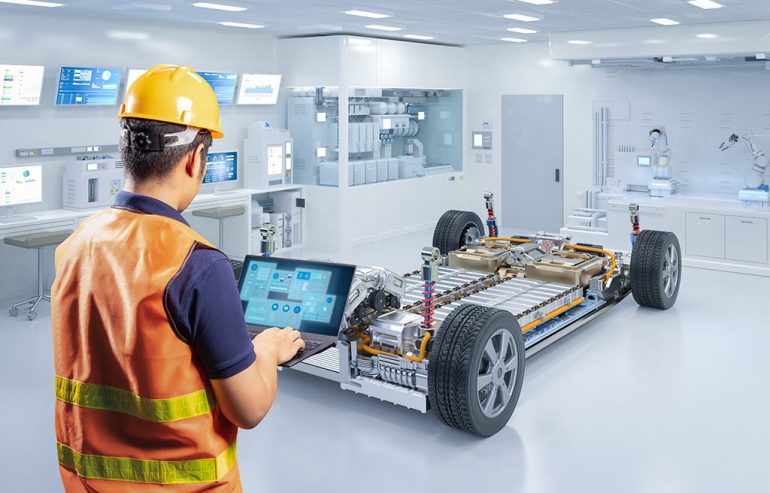
New investments in the United States and Europe are strategically aimed at challenging China’s dominant position in the production of a crucial component for electric vehicle (EV) batteries – graphite. However, industry experts acknowledge that this endeavor will not be without significant challenges.
The spotlight is shifting towards synthetic graphite, an element that dates back to the late 19th century but has only recently been redirected towards EVs. Its adoption is rapidly gaining momentum, with projections suggesting that synthetic graphite could constitute nearly two-thirds of the EV battery anode market by 2025, according to Benchmark Mineral Intelligence.
Also, don’t forget that you can get discounted new car pricing with a free quote through qualified local dealer partners.
In the context of electric vehicles, each EV requires an average of 50-100 kg (110-220 pounds) of graphite in its battery pack for the anodes, which is roughly twice the amount of lithium. As per research by Mordor Intelligence, the synthetic graphite market is expected to witness over 40% growth in the next five years, reaching $4.2 billion by 2028. Nevertheless, companies seeking to establish a foothold in this emerging market face formidable competition from China.
China currently refines over 90% of the world’s natural graphite, which is a crucial ingredient in nearly all EV battery anodes. Chinese giants like BTR and Shanshan are making substantial investments, amounting to hundreds of millions of dollars, to ramp up synthetic graphite production.
The introduction of synthetic graphite into the battery supply chain has achieved maturity and commercial success in China. Analyst Victoria Hugill from UK-based researcher Rho Motion expressed astonishment at the scale and number of participants in China, particularly in the anode sector.
While Chinese producers dominate a significant share of the growing synthetic graphite market, newcomers like Anovion, Novonix, and Vianode in the United States and Norway are motivated by two factors. Firstly, it is easier to establish synthetic graphite production facilities than to commission new mining sites for natural graphite, thanks to incentives provided by the U.S. Inflation Reduction Act. Secondly, these new facilities do not need to be located near graphite mines.
New synthetic graphite production facilities in the United States, such as Anovion’s $800 million plant in Bainbridge, Georgia, and Novonix’s $160 million plant in Chattanooga, Tennessee, stand to benefit from incentives included in the IRA and the bipartisan Infrastructure Investment and Jobs Act.
Vianode, a joint venture between Norsk Hydro and battery manufacturer Elkem, plans to build synthetic graphite facilities in Europe and North America, with the capacity to supply up to 2 million EVs annually by 2030. This venture promises a unique proposition with a production process powered by renewable energy and a carbon footprint 90% lower than that of Chinese graphite refiners, as highlighted by Hans Erik Vatne, interim chairman of Vianode.
The Vianode process could alleviate concerns regarding the sustainability of synthetic graphite production, traditionally reliant on fossil fuels. Vatne also emphasizes the advantages of synthetic graphite, including faster charging and longer battery life. Experts note that synthetic graphite generally offers higher purity and more predictable performance than natural graphite. Furthermore, the price gap between the two materials has significantly narrowed this year, prompting producers to incorporate even more synthetic material into their battery anodes, which still represent less than 10% of the cost of an EV battery cell.
The growing demand for clean and consistent battery materials is identified as a primary driver for the adoption of synthetic graphite, according to battery expert Bob Galyen, founder of Galyen Energy and former CTO of China’s CATL, the world’s largest EV battery maker.
Despite these developments, the construction of new synthetic graphite production facilities, even with federal incentives, necessitates a substantial investment, notes Novonix’s Chris Burns. Consequently, China is expected to continue its dominance in synthetic graphite production, with forecasts by researcher Fastmarkets suggesting that Chinese production of the material will increase from approximately 1.6 million metric tons this year to 2 million by 2030.
In the words of Burns, “The real truth is China will be the biggest player in this market for the next 10 or 20 years,” highlighting the ongoing disparity in supply and demand for North American alternatives throughout the coming decade.
Source: Reuters